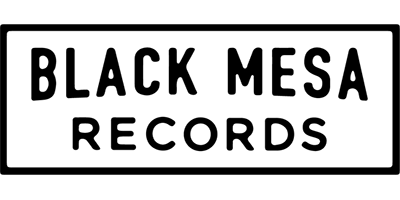M. Lockwood Porter
M. Lockwood Porter's Communion in the Ashes is a rallying cry for the hopeless and heartbroken, its lyrics set to a soundtrack of anthemic heartland rock & roll. This is a record that addresses our modern-day social problems from a perspective of hope, encouraging those who listen to focus on activism and community-building rather than despair. Along the way, Porter delivers some of the most engaging, electrifying songs of his career, rooting these melodic calls-to-action in the stomp and epic swagger of a five-piece road band.
Born into a working-class family in rural Oklahoma, Porter launched his songwriting career after relocating to the San Francisco Bay Area, kicking things off with 2013's Judah's Gone. There, in the nation's most expensive real-estate market, he also taught classes to underprivileged students at an inner-city school, a job that gave him a close-up view of the nation’s growing class divide and its many symptoms, including poverty, gentrification, and homelessness. As his cross-country touring increased, so did the presence of political and social issues within his music, with 2016's How to Dream Again taking influence from the socially-conscious works of Bob Dylan and Bruce Springsteen. After writing 2019's Communion in the Ashes, Porter returned to Oklahoma with the goal of contributing to a growing artistic community and, hopefully, affecting social change.
“The tech boom of the last 10 years has totally transformed the whole Bay Area, and has essentially made it a playground for the rich. Working-class folks and artists aren't welcome there anymore, and this has manifested in rising housing costs, closure of music venues, and the proliferation of homeless tent cities,” Porter divulges. “In the last verse of the title track, I can see in hindsight that I was saying a ‘goodbye’ to the Bay Area, even though I didn't know that I'd be leaving at the time.”
With Communion In The Ashes, Porter crystallizes a sound that is uniquely his own: one that gatecrashes the borders between indie rock & roll, singer/songwriter folk, and Americana. Written alone on the acoustic guitar and recorded with Porter's band during a collaborative, five-day studio session in Chico, CA, the album champions togetherness as an antidote to the immense problems we face as a society. On the kinetic title track, a kick drum bangs out a steady pulse while Porter unveils his game plan: "When the bridges are all burned, let's congregate the masses, let's hold a new communion in the ashes." The song doesn't turn a blind eye to the desperation of today's world; instead, it builds something new from the rubble, transforming desolation into hope. A similar feeling imbues the piano-propelled "I Will Do No More A-Prayin’," a secular hymn that nods to Porter's childhood days in the Southern Baptist church. If "I Will Do No More A-Prayin’" evokes the solemnity of Sunday morning, though, the bulk of Communion in the Ashes rustles up the thrill of Saturday night. There are furiously strummed power chords, pounding percussion, vocal harmonies, and 80s-inspired synthesizers, shot through with a voice that's urgent, compelling, and quick to incite. These are songs about revolution and rebuilding, and Porter sings them accordingly, his voice echoing and rattling its way between the electric guitars and upright piano.
Given the album's communal emphasis, it's appropriate that Communion in the Ashes is also Porter's most collaborative release. All five band members contributed to the arrangement process, with drummer Peter Labberton pulling triple-duty as the album's engineer and mixer. The band worked swiftly, foregoing rehearsal in favor of instinctual performances and quick studio decisions. "Get Back to the Wild," the one song not recorded live, gave the band a chance to experiment, building a two-bar drum and piano loop into a spiritually-minded song that examines the distance between human nature and human society. Porter and company looked to their own influences for cues, too, with Communion's touchstones running the gamut from Leonard Cohen’s inventive songwriting and Tom Petty's concise melodies to Wilco's experimentation and War on Drugs' gorgeously textured tones. Even so, this is the most distinctive release in M. Lockwood Porter's catalog — an album that both nods to the past and pushes forward to the future, thanks in part to a full-band attack that lends fire, ferocity, and grit to the tracklist.
“I think the fully collaborative recording process was the biggest musical shift between recording How To Dream Again and Communion In The Ashes,” explains Porter. “Jeremy Lyon has been playing in my live band since 2016, but this was the first M. Lockwood Porter album that he’s worked on, and he brought a much wider palette of guitar tones to this album than I've used on past records. This is also the first time I’ve recorded with synthesizers. I had given the band the vague direction that I wanted us to imagine ourselves as a ‘dystopian gospel band’ before we started recording, and my keyboardist Jeff Hashfield found a sound on his Prophet synthesizer that we ended up dubbing the ‘Blade Runner church organ.’ We ended up using it on nearly every song.”
Throughout Communion In The Ashes, Porter’s electrifying “dystopian gospel band” explores how frightening our world can be. The record’s enthralling cover art — designed by William Schaff, known for his longtime association with Songs: Ohia's Jason Molina — shines a light on that horrifying present, depicting a man (A preacher? An organizer? A demagogue?) addressing a crowd from the foreground of a burning, decaying city. With its Springsteen-sized catharsis, though, Communion in the Ashes offers listeners something new: a soundtrack with which to rise up, rebuild, and renew. Call it protest music if you'd like. Call it a political album if you must. Whatever the description, Communion in the Ashes packs the strongest punch of Porter's career, capturing not just one man's reaction to the present day, but an entire community's opportunity to better their own tomorrows.
